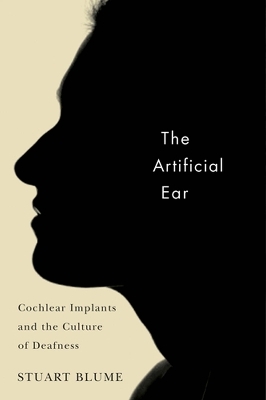
The Artificial Ear
Cochlear Implants and the Culture of Deafness
Seiten
2010
Rutgers University Press (Verlag)
978-0-8135-4659-9 (ISBN)
Rutgers University Press (Verlag)
978-0-8135-4659-9 (ISBN)
- Keine Verlagsinformationen verfügbar
- Artikel merken
When it was first developed, the cochlear implant was hailed as a 'miracle cure' for deafness. That relatively few deaf adults seemed to want it was puzzling. Part ethnography and part historical study, this title is based on interviews with researchers who were pivotal in the early development and implementation of the new technology.
When it was first developed, the cochlear implant was hailed as a 'miracle cure' for deafness. That relatively few deaf adults seemed to want it was puzzling. The technology was then modified for use with deaf children, 90 percent of whom have hearing parents. Then, controversy struck as the Deaf community overwhelmingly protested the use of the device and procedure. For them, the cochlear implant was not viewed in the context of medical progress and advances in the physiology of hearing, but instead represented the historic oppression of deaf people and of sign languages. Part ethnography and part historical study, ""The Artificial Ear"" is based on interviews with researchers who were pivotal in the early development and implementation of the new technology. Through an analysis of the scientific and clinical literature, Stuart Blume reconstructs the history of artificial hearing from its conceptual origins in the 1930s, to the first attempt at cochlear implantation in Paris in the 1950s, and to the widespread clinical application of the 'bionic ear' since the 1980s.
When it was first developed, the cochlear implant was hailed as a 'miracle cure' for deafness. That relatively few deaf adults seemed to want it was puzzling. The technology was then modified for use with deaf children, 90 percent of whom have hearing parents. Then, controversy struck as the Deaf community overwhelmingly protested the use of the device and procedure. For them, the cochlear implant was not viewed in the context of medical progress and advances in the physiology of hearing, but instead represented the historic oppression of deaf people and of sign languages. Part ethnography and part historical study, ""The Artificial Ear"" is based on interviews with researchers who were pivotal in the early development and implementation of the new technology. Through an analysis of the scientific and clinical literature, Stuart Blume reconstructs the history of artificial hearing from its conceptual origins in the 1930s, to the first attempt at cochlear implantation in Paris in the 1950s, and to the widespread clinical application of the 'bionic ear' since the 1980s.
STUART BLUME is professor emeritus of science dynamics at the University of Amsterdam, The Netherlands. He is the author of several books, including Insight and Industry: The Dynamics of Technological Change in Medicine.
| Erscheint lt. Verlag | 30.1.2010 |
|---|---|
| Verlagsort | New Brunswick, NJ |
| Sprache | englisch |
| Gewicht | 460 g |
| Themenwelt | Medizin / Pharmazie ► Medizinische Fachgebiete ► HNO-Heilkunde |
| Studium ► Querschnittsbereiche ► Geschichte / Ethik der Medizin | |
| ISBN-10 | 0-8135-4659-1 / 0813546591 |
| ISBN-13 | 978-0-8135-4659-9 / 9780813546599 |
| Zustand | Neuware |
| Haben Sie eine Frage zum Produkt? |
Mehr entdecken
aus dem Bereich
aus dem Bereich
Die Geschichte eines Weltzentrums der Medizin von 1710 bis zur …
Buch | Softcover (2021)
Lehmanns Media (Verlag)
CHF 27,90
Krankheitslehren, Irrwege, Behandlungsformen
Buch | Softcover (2024)
C.H.Beck (Verlag)
CHF 55,90


